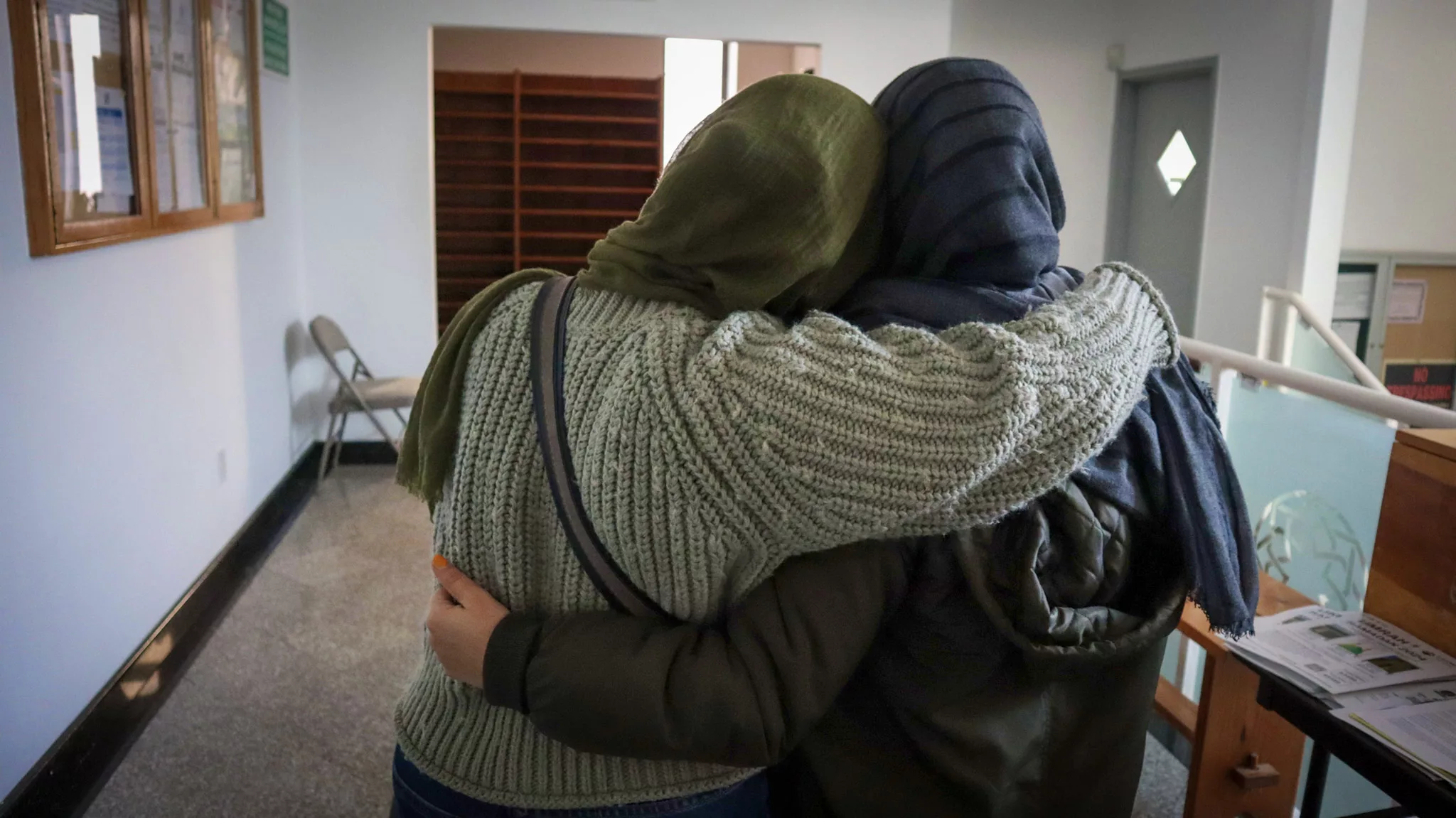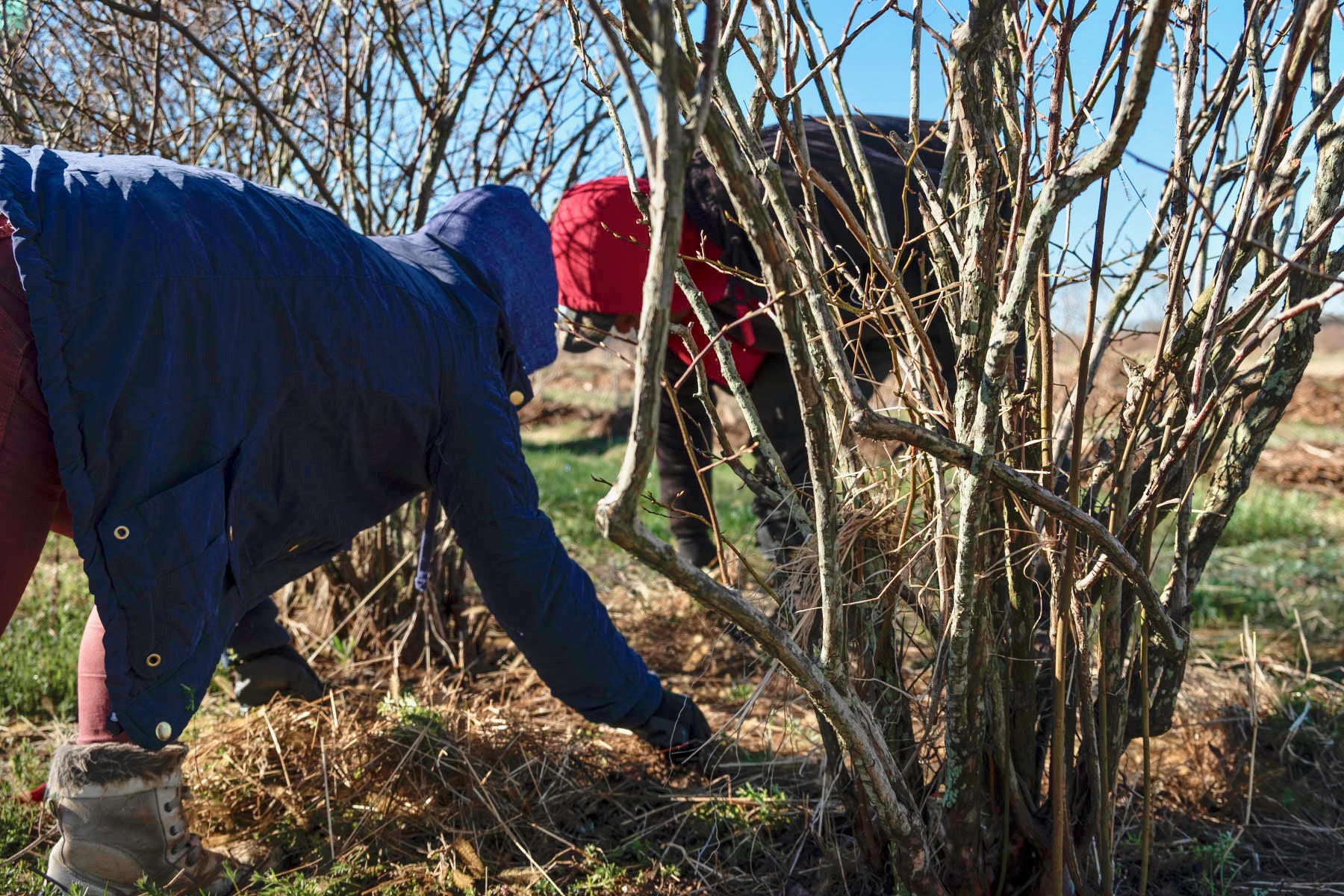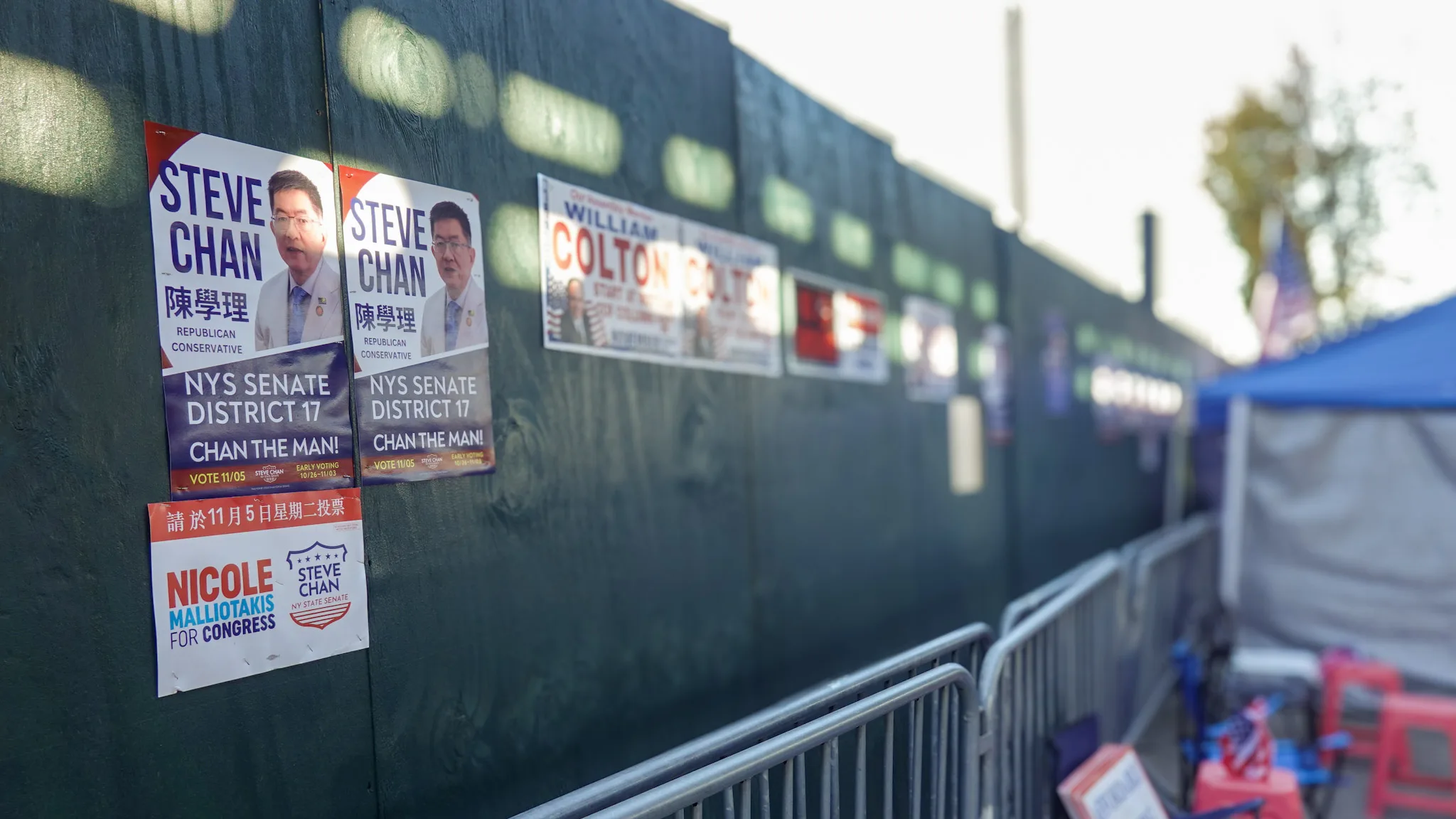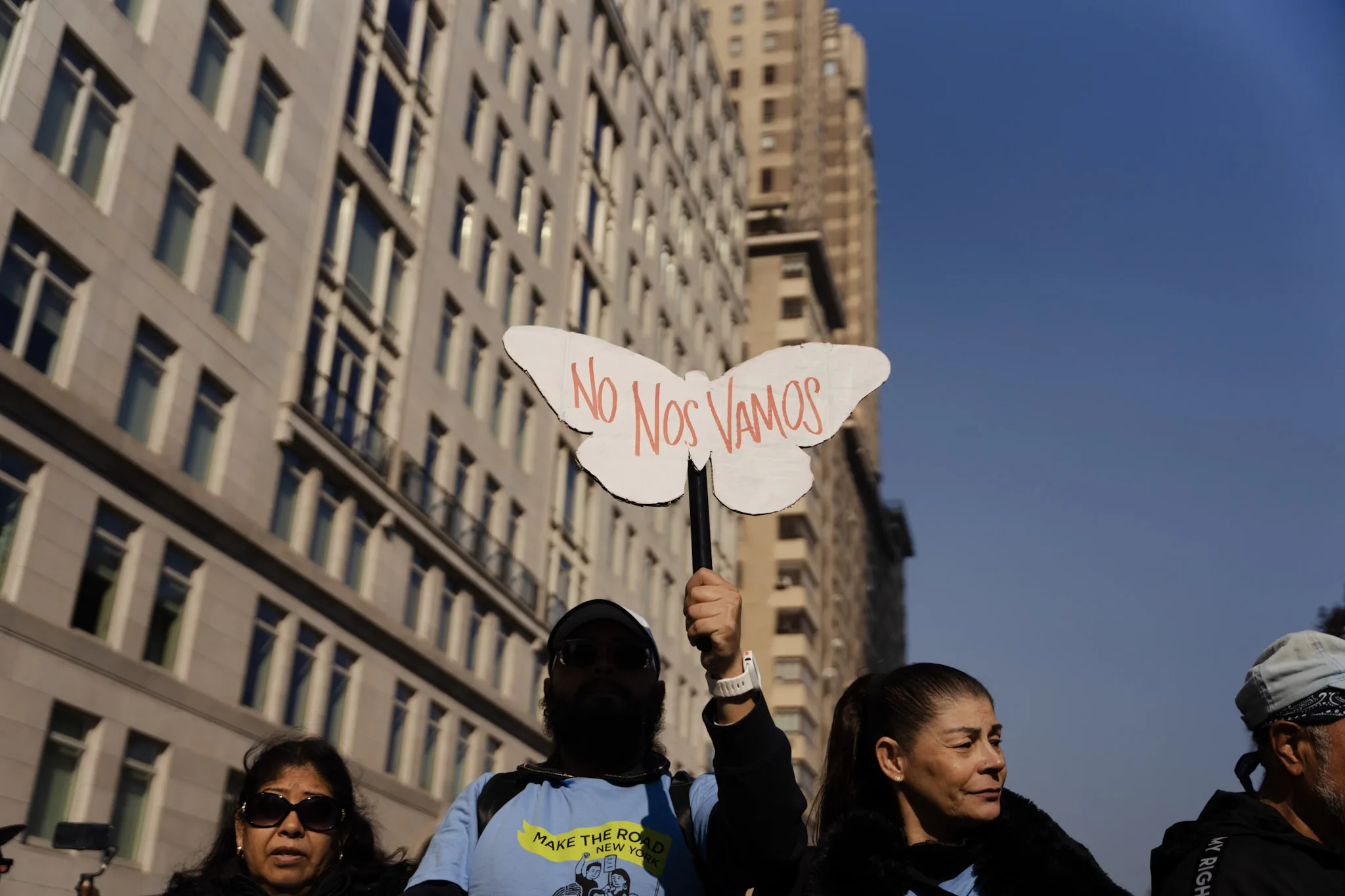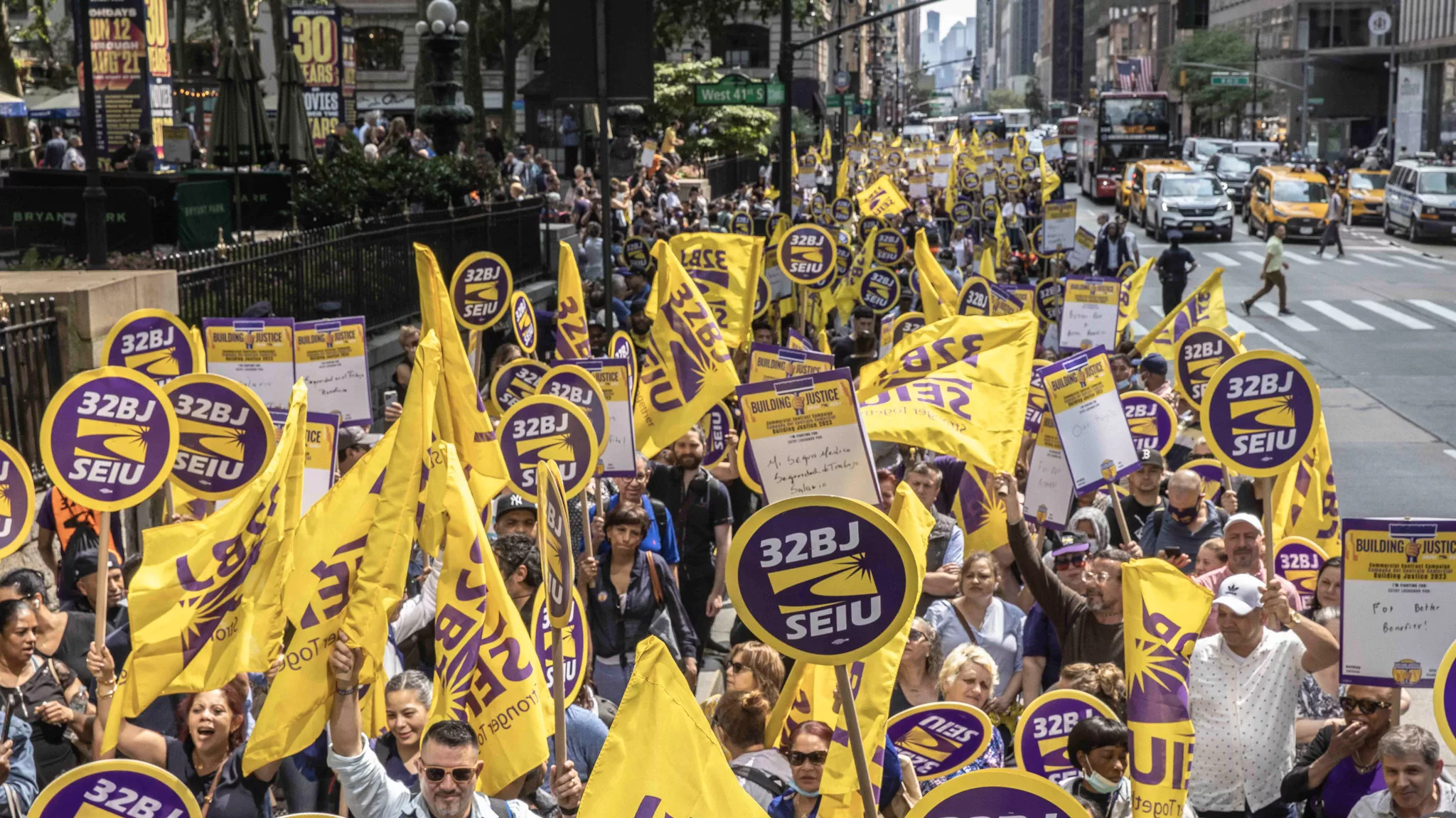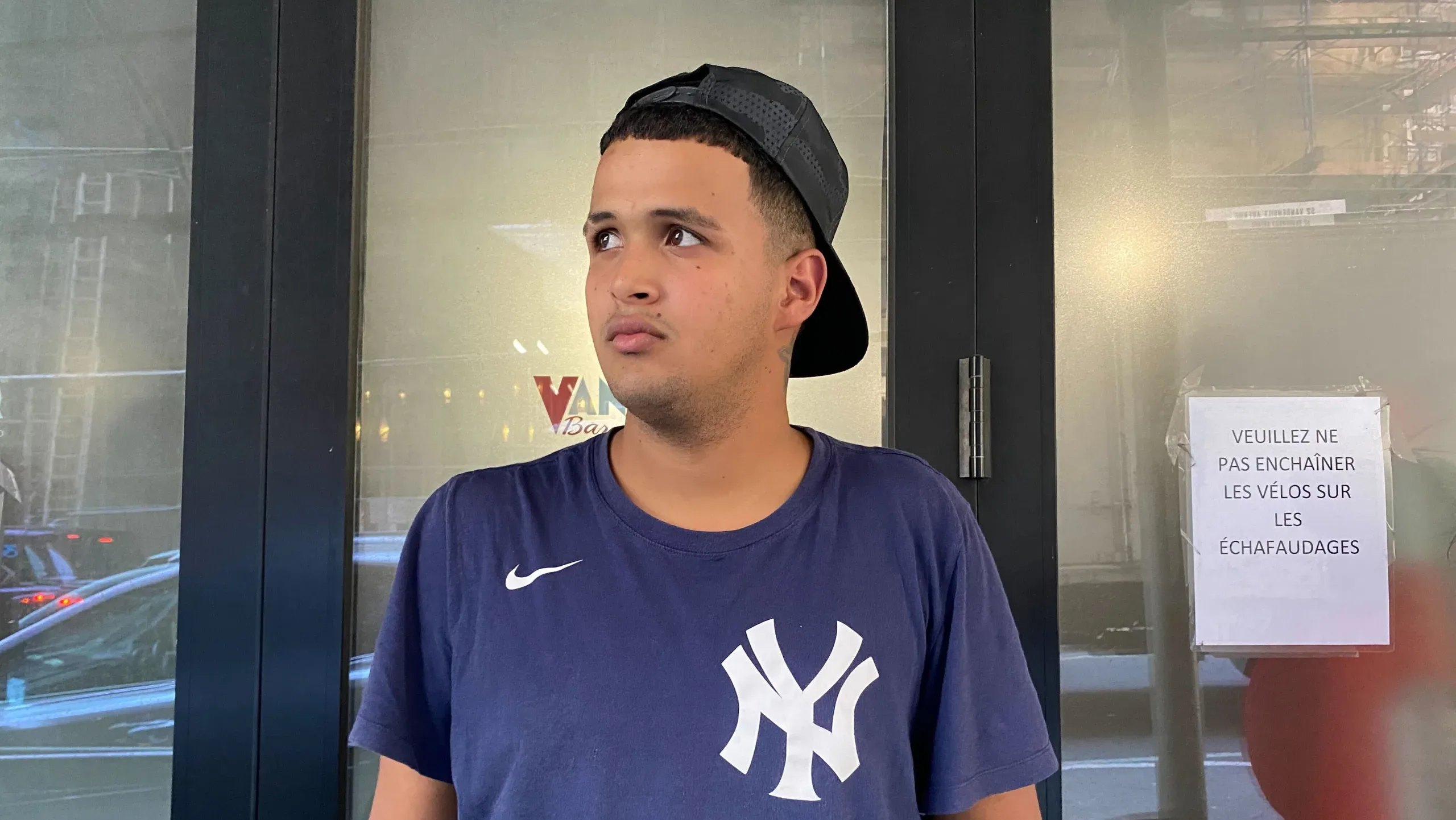The two sisters, Pari and Raha, slept night after night in the shelter next to hundreds of other asylum seekers from countries around the world. Together they’ve shared the shelter with others from Venezuela, Guinea, Ecuador, Senegal, and Russia, among other places. But they have yet to meet any other residents from Afghanistan.
“We came here thinking we were going to come to some place better,” Pari said in Dari through an interpreter. “It’s scary being there. We fear for our safety.”
The sisters, who went by their nicknames to protect their immigration cases, came to New York just over two weeks ago and were assigned to stay at the sprawling Randall’s Island tent shelter with a capacity of 3,000. They said they have no privacy and have witnessed violence among the shelter residents.
“We are practicing Muslim women, and we grew up in a Muslim household, so going into a space that doesn’t abide by those norms has been a bit of a shock,” Raha, one of the sisters, said in Dari. “We are not able to feel at ease there.” Her sister, Pari, added: “We fear not only gender-based violence but also Islamophobia and religious-based violence.”
While tens of thousands of Latin American and West African asylum seekers have captured national attention in recent years and months, another group has also been entering the city shelter system since late 2022 and early 2023 — Afghan asylum seekers.
Many fly to Brazil with a humanitarian visa, then traverse several South American countries, Central America, and Mexico on buses, boats, and by foot. They cross the U.S.-Mexico border, usually into Texas or California. Then, they fly to New York, entering the now-overwhelmed city shelter system.
Sisters Pari and Raha, who are 29 and 30, are from Bamya in central Afghanistan. They lived in Iran for years before heading to Brazil without any other family. In Brazil, they began the trek north. They crossed from Tijuana into California, and flew to New York, arriving in mid February. They dream of learning English, pursuing a career in the arts, maybe in photography, and making their own money. But without what they feel is a protected place to rest, it’s been difficult to focus on anything else, they said.
“We just didn’t know the sort of precarious situation we would all be placed in with everybody else,” Raha said. “Almost like a number, not taking into consideration our religious background, gender, and all that.”
Advocates say that the support systems that have grown for migrants over the last few years are not built to respond to the needs of Afghan asylum seekers. Starting in the spring of 2022, more than 179,000 asylum seekers entered the city’s care, with about 64,000 currently in city care, according to official estimates.
A lack of available language support in Dari and Pashto, legal help, and housing assistance beyond basic shelter has forced other Afghans already living in New York for years or decades to bridge these divides, according to advocates.
“They’re often turning to places and getting absolutely no help,” said Arash Azizzada, the co-founder and co-director of Afghans For A Better Tomorrow (AFBT), a community advocacy organization founded during the spring of 2021, as the U.S. announced it would be withdrawing from Afghanistan.
When Kabul fell to the Taliban in the summer of 2021, about 76,000 Afghans were evacuated from the country and brought to the U.S., with more than 2,500 evacuees resettled in New York State. Hundreds of that group were resettled in the Albany area, where Afghans also leaned on each other for support as they began their lives in the U.S.
Azizzada called the evacuations of 2021 “chaotic, quite frankly inept, and incomplete,” as tens of thousands of people who could be eligible for U.S. visas have been shut out of the process because of caps on visa numbers.
“There’s no political will behind the need to move so many Afghans through legal pathways,” Azizzada said. “These are the folks who got left behind.”
The number of Afghans with pending asylum cases in New York immigration courts has grown significantly in the past several fiscal years, according to data from the Transactional Records Access Clearinghouse at Syracuse University (TRAC).
In the 2022 fiscal year (FY) there were 38 pending asylum cases for Afghan nationals in New York immigration courts. In FY 2023, that number jumped more than 300% to 179 pending cases. And as of December of 2023, 269 Afghans had pending asylum cases in New York immigration courts, according to TRAC, making it the highest number of Afghan asylum cases in New York immigration courts in more than a decade.
When asked about asylum seekers in New York, City Hall said that they did not have data on the number of Afghan asylum seekers currently in city shelter, and they did not respond to Documented’s questions about available resources for Afghans in city care.
A space to connect
On a recent Sunday, in the basement of the masjid (mosque) in Flushing, Queens, more than 150 newly arrived Afghan asylum seekers gathered for an event organized by AFBT. The event was meant to create a space of community where Afghan asylum seekers could connect with each other and with Afghans already living here.
Mothers and fathers held their babies — sometimes as young as newborns — and strollers filled the corridors. Teenagers accompanied their parents at the communal lunch that afternoon of a traditional Afghan meal of Qabuli Pulao, a colorful rice dish of lamb, carrots and raisins. At another table scattered with craft supplies, kindergarten and elementary-aged school children made beaded bracelets that spelled out their names. Many switched seamlessly between Dari and English.
Some volunteers assisted with legal intake and handed out cell phones to asylum seekers. By 1:45 p.m., the basement had filled up with people, and dozens of families were sharing conversations. But despite the embraces shared amongst mothers, and the laughs exchanged among their children, the trauma many had endured was, in some cases, glaring.

One man told Documented he had worked for U.S. intelligence in Afghanistan and pulled down his shirt to show scars etched across his skin, which he said were from several bullets that had been lodged in his chest during the conflict. Another man, a 37-year-old father of six, acted out the chest compressions he performed on his mother as he recalled his family’s trek through the Darién Gap. She fainted, he said, and they thought she had died. “I remember that memory. So I thank many many times God that we are safe now,” Mohammad said in English. “Once we started to come, there is no choice to go back.”
Mohammad, who only shared his middle name so his shelter stay would not be affected, arrived in New York with his children, wife, and mother in May last year, without any friends or family ties in the city. His youngest child is 3 years old, and his oldest is 19. The family traveled through 14 countries since leaving Kabul, flying to Brazil and making their way to New York after crossing the border into California. They were placed in the Roosevelt Hotel, where they stayed until they were transferred to another shelter in downtown Manhattan last September , where they’re now living.
Life in the shelter has been challenging, Mohammad said, but they have made do. When the family was transferred from one shelter to another last fall, Mohammad was only given a metro card and an address. With belongings accumulated in a family of nine, he had to make multiple trips back and forth on the subway to the Roosevelt to gather everything they owned.
Now, as the family has begun to settle, their shelter stay will expire at the end of March. So they will have to, once again, pack up and reapply for housing. His children are liking their schools, which are accessible from their current shelters, but Mohammad is concerned they’ll be shuffled away once they’re moved. “They don’t provide you with transportation,” he said. “They don’t care about you.”
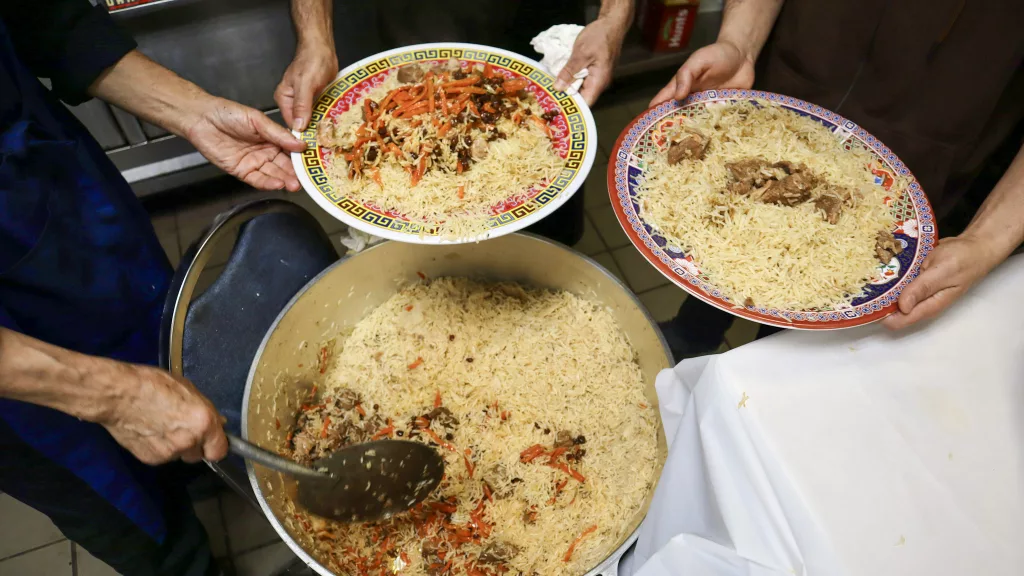
Still, Mohammad is trying to propel his family’s dreams forward. He worked as a civil engineer in Afghanistan, and is currently attending Cooper Union’s Retraining Program for Immigrant Engineers. He recently received his work permit, and hopes to find a job in engineering. And he has been grateful to find a space with AFBT. “This community helped me and my family a lot,” Mohammad said.
Halema Wali, another co-founder of AFBT, was running around the basement of the masjid on Sunday, attending to questions, translating in Dari and English, and helping set up for lunch, among many other tasks. In early 2023, she heard through a community member that Afghans were also arriving on Port Authority buses. So as AFBT set up an intake table there, they saw that many Afghans did not have access to culturally appropriate clothing and Halal food. “A lot of people were coming with just the clothes on their back, nothing else,” Wali said.
Now in shelters, Wali said, a lot of Afghans have had “negative” experiences. The facilities often lack Halal food, as do food pantries. There are no kitchens for families to cook their own meals, and the shelters often have no information in Dari and Pashto. The shelters “are not equipped to provide for this population,” Wali said. “People make do with it, with what they have, but it’s certainly not the ideal.”
And as 30 and 60-day shelter stay limits approach for families like that of Mohammad, these asylum seekers worry about the future for themselves and for their children who are enrolled in the school systems, Wali said. “The general sentiment overall is just like: ‘What’s next?’ ” Wali said. “And there’s a very real and tangible fear of: ‘Are we going to be on the streets?’ ”
Why New York?
The group of Afghans now arriving in New York City largely constitutes a population who arrived in the U.S. through a different travel route than those Afghans who were previously evacuated or came to the U.S. with visas. Most did not enter the country under humanitarian parole, or with Special Immigrant Visas, and therefore have fewer resources available to them through federal funding.
Those living in shelters mostly entered through the southern border, and made their way north. Now, many of the children of Afghan immigrants who arrived during the 1980s, and Afghan immigrants themselves, are taking it upon themselves to assist the new asylum seekers.
“I think New York is a hotspot, it’s always been the hub for the Afghan community,” said Susan Yaqubie, a staff attorney at Women for Afghan Women, but who was volunteering at Sunday’s event in her own personal capacity. Her own father immigrated to New York in the 1980s, and she was born and raised in Queens. “A lot of Afghans here stepped up,” she said.
Yaqubie, like other Afghan Americans, has noticed many asylum seekers have organized amongst themselves to exchange information about where to find community support, through WhatsApp and word of mouth, she said. “It’s a lot of sharing, and we’re grateful for that because if not, it would leave a lot of these folks stranded with no resources with no help,” Yaqubie said.
At AFBT, the group has been serving about 300 to 400 Afghan asylum seekers through their in-person events, in addition to several hundred they assist in other ways, said Azizzada. The events, he said, “are possible because of community based organizations and Afghan Americans who moved here 30, 40 years ago, who are donating their time and money.”
For the Afghan asylum seekers who crossed through the southern border and then turned themselves into immigration authorities — unlike others from Afghanistan who were paroled into the U.S. between July 31 of 2021 through September 30 of 2023, and those who hold Special Immigrant Visas — there is no federal funding for legal assistance, said Shala Gafary, a Managing Attorney for the Afghan Legal Assistance Project at Human Rights First.
“They’re reliant on nonprofit organizations that have other sources of funding,” Gafary said. But according to Gafary, there aren’t enough attorneys in New York who have familiarity with the conflicts and the region or the language skills to support Afghan asylum seekers, and legal groups are already overworked and struggling to take on new cases. “But just because you don’t see them often doesn’t mean that they’re less deserving of protection,” she said.
And for the asylum seekers who may not have access to information about their immigration court case, the repercussions can be immense, Gafary said. “The most immediate consequence is that you have a whole bunch of people that get deportation orders based on just a lack of information,” she said.
For Pari and Raha, as very recent arrivals, the process of finding legal aid has just begun — but Mohammad has already received his work permit. The security situation in Afghanistan was untenable for his family, and after the Taliban returned to power in Kabul, his family “had a really really bad experience,” he said.
“It’s a hard situation, but we have a dream for our kids,” Mohammad said. “Otherwise I will not leave my country with six kids in this dangerous route.”
